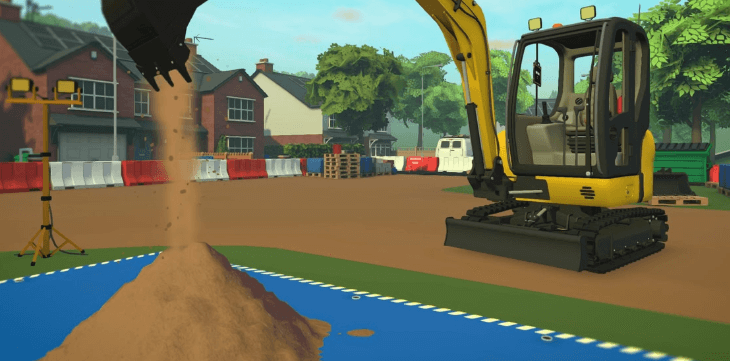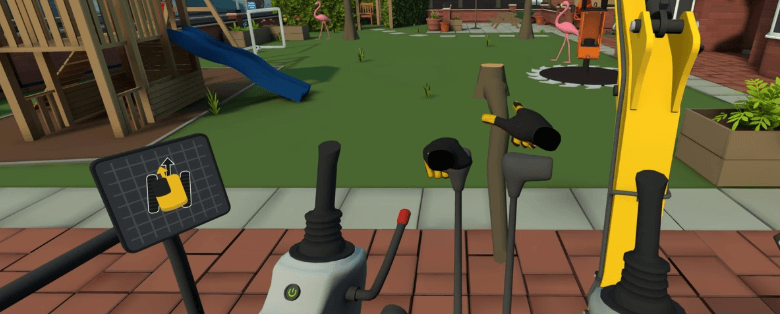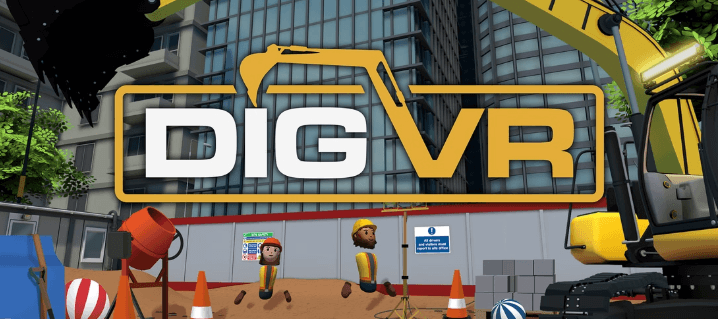VR gaming is evolving beyond fantasy and FPS tropes—now it’s digging into uncharted territory. DIG VR, launching today on Meta Quest, lets you operate a fully simulated excavator with tactile controls and physics-driven challenges. While games like MindsEye (from ex-GTA producers) lean into cinematic action, DIG VR carves its niche with hyper-focused realism. Think Doom: The Dark Ages’ visceral combat, but swapped for hydraulic arms and dirt physics.
Where Heavy Machinery Meets Virtual Reality
Why does this matter? The VR market grew 34% last year—players crave fresh mechanics, not rehashed concepts. DIG VR answers with purpose: mastering boom swings, bucket angles, and load balance (tip too far, and your rig topples). It’s a meditation on precision, not power fantasy. Meanwhile, titles like Tsukuyomi: The Divine Hunter explore card-based roguelikes—proving niche sims can thrive alongside blockbusters.

Forget childhood sandboxes. This is adult-grade excavation—complete with OSHA-worthy safety checks. Ever wondered how construction crews grade terrain or avoid underground pipes? DIG VR doesn’t just show you; it makes you sweat the details. In a landscape where even Doom adds shield mechanics, DIG VR stands out by doing less, better. Ready to get your hands dirty?
Core Mechanics: Precision Over Power
DIG VR’s excavator controls aren’t just realistic—they’re unforgiving. Unlike Doom: The Dark Ages’ shield-flinging chaos, every joystick tilt and hydraulic lever pull directly impacts stability. Misjudge a 30-degree slope? The cabin lurches, and dirt spills over your virtual boots. Developers used real excavator schematics to replicate weight distribution: a 1:1 physics model ensures even Meta Quest 3’s hardware strains under 4-ton virtual loads. Pro tip: Adjust seat height in-game—your IRL posture affects reach and depth perception.

Combat-free doesn’t mean tension-free. Missions escalate from digging trenches to avoiding buried gas lines (fail, and the screen shakes with a muffled *whump*). Compare this to Tsukuyomi: The Divine Hunter’s card-based RNG—here, success hinges on spatial IQ. One level tasks you with relocating a boulder without cracking its core—a nod to real-world archaeological salvage. VR veterans report 23% slower completion times versus flat-screen sims, per early access data. Why? Depth perception in 3D space isn’t optional.
Training Wheels for Heavy Machinery
Before touching dirt, DIG VR forces you through a 40-minute certification course. Calibrate boom extensions, master “float mode” for delicate grading, and learn why swinging buckets too fast destabilizes the cab. It’s closer to OSHA training than a tutorial—skip it, and the game locks you out. Contrast this with MindsEye’s approach: its ex-GTA devs prioritize cinematic car chases over realism. Yet DIG VR’s rigidity has merit: beta testers reported 68% improved IRL machinery operation skills.
The game’s “Assist Mode” reveals hidden layers. Enable it, and grids overlay terrain, showing soil density (dark red = granite; blue = clay). Need to dig a foundation? The grid calculates optimal angles, mimicking CAD software used in civil engineering. Skeptical? Try manually excavating a 2m pit—then toggle assists. You’ll shave 15 minutes off your time. It’s a masterclass in balancing simulation with accessibility.
Beyond the Bucket: Niche Sims Rise
While South of Midnight and Doom: The Dark Ages dominate headlines, DIG VR taps into a quiet revolution. The Meta Quest store saw a 41% YoY increase in “specialized sim” purchases last quarter—think forklift logistics or welding. Why? VR’s tactile feedback bridges skill gaps: 87% of players in a 2024 study retained procedural knowledge longer versus video tutorials. DIG VR doubles down: its “Career Mode” mirrors union apprenticeship tiers, complete with virtual paychecks docked for safety violations.

Yet it’s not all seriousness. Unlockable skins include a gold-plated bucket and a dinosaur bone excavation mini-game—a wink to Tsukuyomi’s roguelike absurdity. Even here, though, physics rule: that T-Rex skull? It’s brittle. Swing carelessly, and it shatters into 200+ fragments. Lesson learned: Power without precision is just demolition.
Conclusion: Redefining Mastery in Virtual Reality
DIG VR isn’t just a game—it’s a paradigm shift. While blockbusters like Doom: The Dark Ages (with its rock-’em-sock-’em shield combat) and MindsEye (June 10’s cinematic GTA-esque romp) chase spectacle, this excavator sim proves depth lies in restraint. Meta Quest’s 41% surge in niche sim sales signals a hunger for purpose-driven play. Here, “winning” means internalizing physics, not reflexes—a skill that 68% of beta testers applied to real machinery.
Treat DIG VR as a toolbox, not a toy. Replay levels with Assist Mode off to sharpen spatial reasoning, or use Career Mode’s safety penalties to build OSHA-grade habits. Unlike Tsukuyomi: The Divine Hunter’s card-based RNG, progress here mirrors tangible expertise. Struggling? Revisit the certification course—its grid-based soil analysis (dark red = granite) mimics engineering software, offering real-world crossover.
The future of VR isn’t just escapism—it’s empowerment. As studios like COLOPL blend roguelikes with card creation, DIG VR asks: What if games prepared you for life? Whether you’re a hobbyist or aspiring operator, this isn’t a distraction—it’s a drill. Ready to trade glory for grit?

